119 years later, Atlanta dedicates mural to 1906 Race Massacre
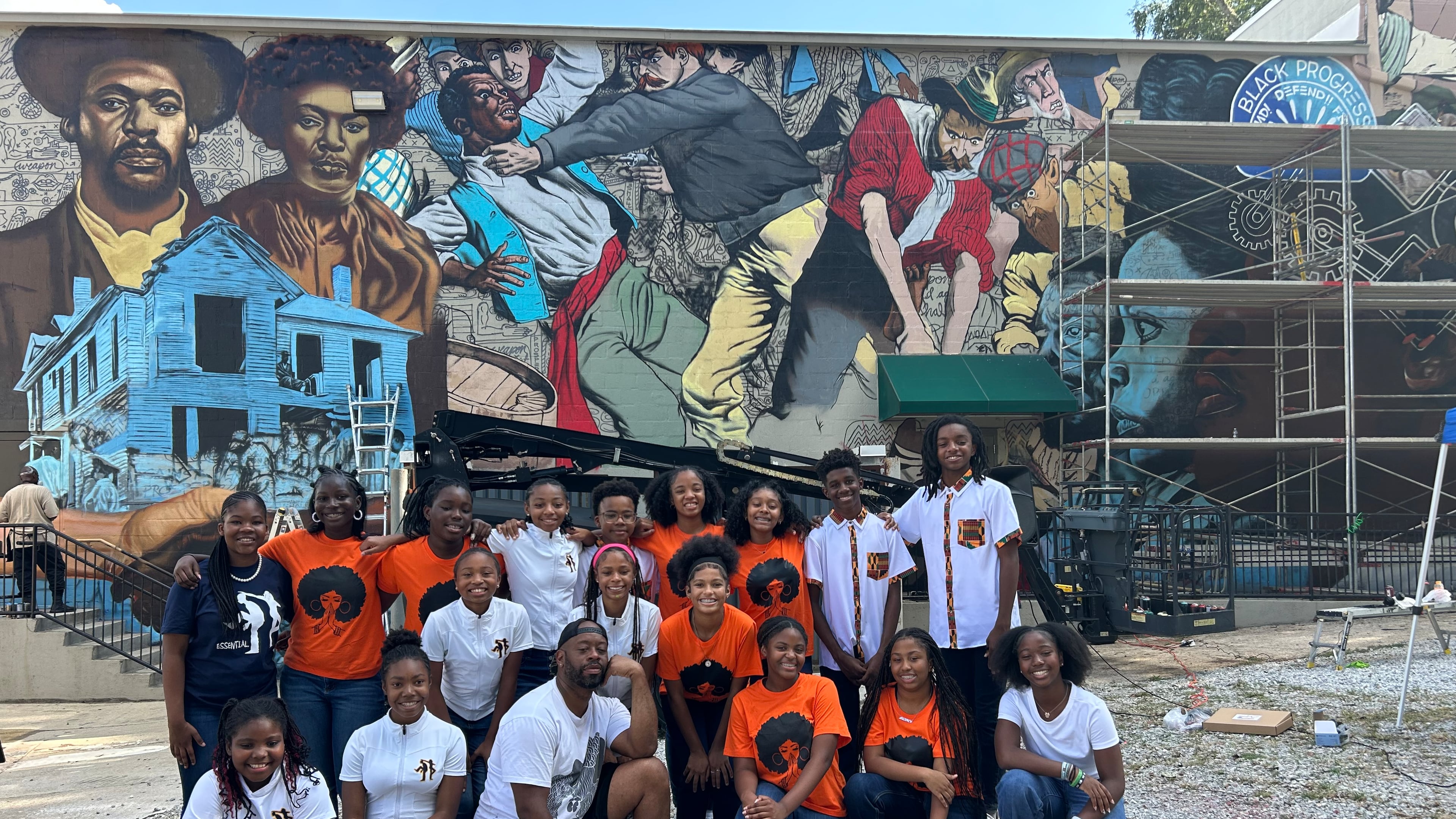
Bold, brown faces shimmer with flecks of gold and give stoic stares while in the pursuit of success. But progression is stalled when tense, white hands grapple Black necks and place a chokehold on survival. But ambition is steadfast, and the violence doesn’t end the cultural fight for Black Atlantans.
A new mural painted on the side of a building in South Atlanta was unveiled Saturday in commemoration of the 1906 Atlanta Race Massacre. On Jonesboro Road, the Focused Community Strategies building is now home to a visual marker of the tragedy that took place 119 years ago — to the week — in that very neighborhood.
A massacre unraveled in 1906 Atlanta after an influx of Black residents moved into the city. Once unfounded accusations that Black men had sexually assaulted white women began to spread, angry white crowds formed, and a violent mob attacked Black neighborhoods for four days. About 25 Black people were killed, and hundreds of people were arrested.
“This is telling the story of what happened in hopes of preventing it from happening again,” visual artist and mural designer Fabian Williams said in an interview with The Atlanta Journal-Constitution.
Williams said it’s the duty of artists to capture the social zeitgeist in creative methods. In this way, history will always be retold and cannot be forgotten.
Williams started planning the project in August 2024 and enlisted the help of artist colleagues to assist completing the mural. But despite his duty as a visual storyteller, Williams acknowledged the emotional toll and spiritual impact the project made.
“My spirit has been challenged,” he said. “I’ve done a lot of projects. I’ve dealt with a lot of different subject matter situations. This is the toughest — by far.”
Words of encouragement are shadows in the background of Black people being violently attacked by white hands.
“No weapon formed against me shall prosper,” a quote on the mural reads.
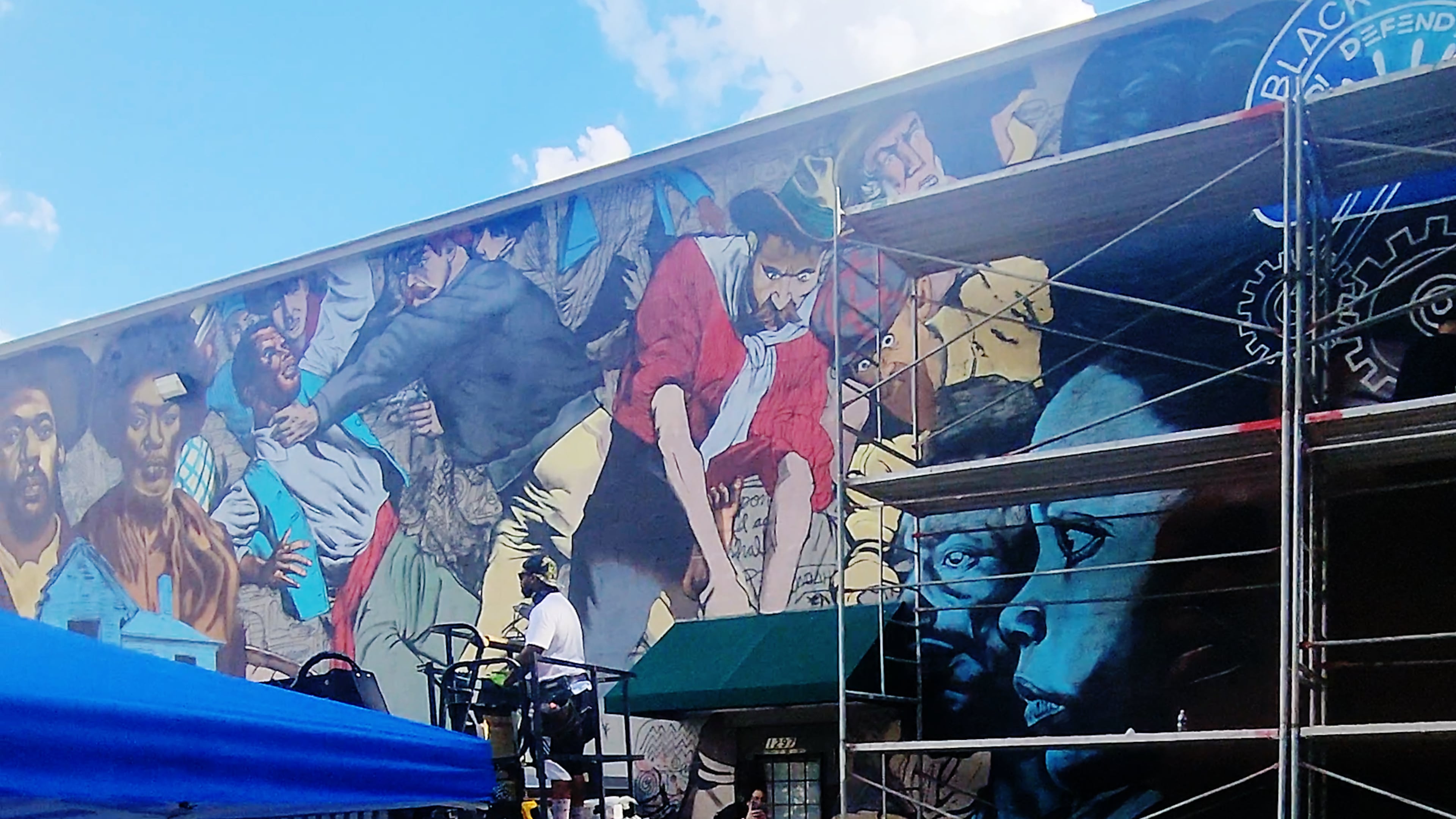
Much of the brutal images were adapted from an October 1906 French newspaper that reported the violence.
Williams described the mural as a narrative showing the independence of Black Atlantans before the 1906 Race Massacre, how their livelihoods were involuntarily pulled into the dilemma, and their determination for autonomy despite the systemic and oppressive forces the massacre placed on the future of the Black Atlanta community.
“Seeing people that look like me being attacked and painting that attack is definitely heavy work for me,” he noted.
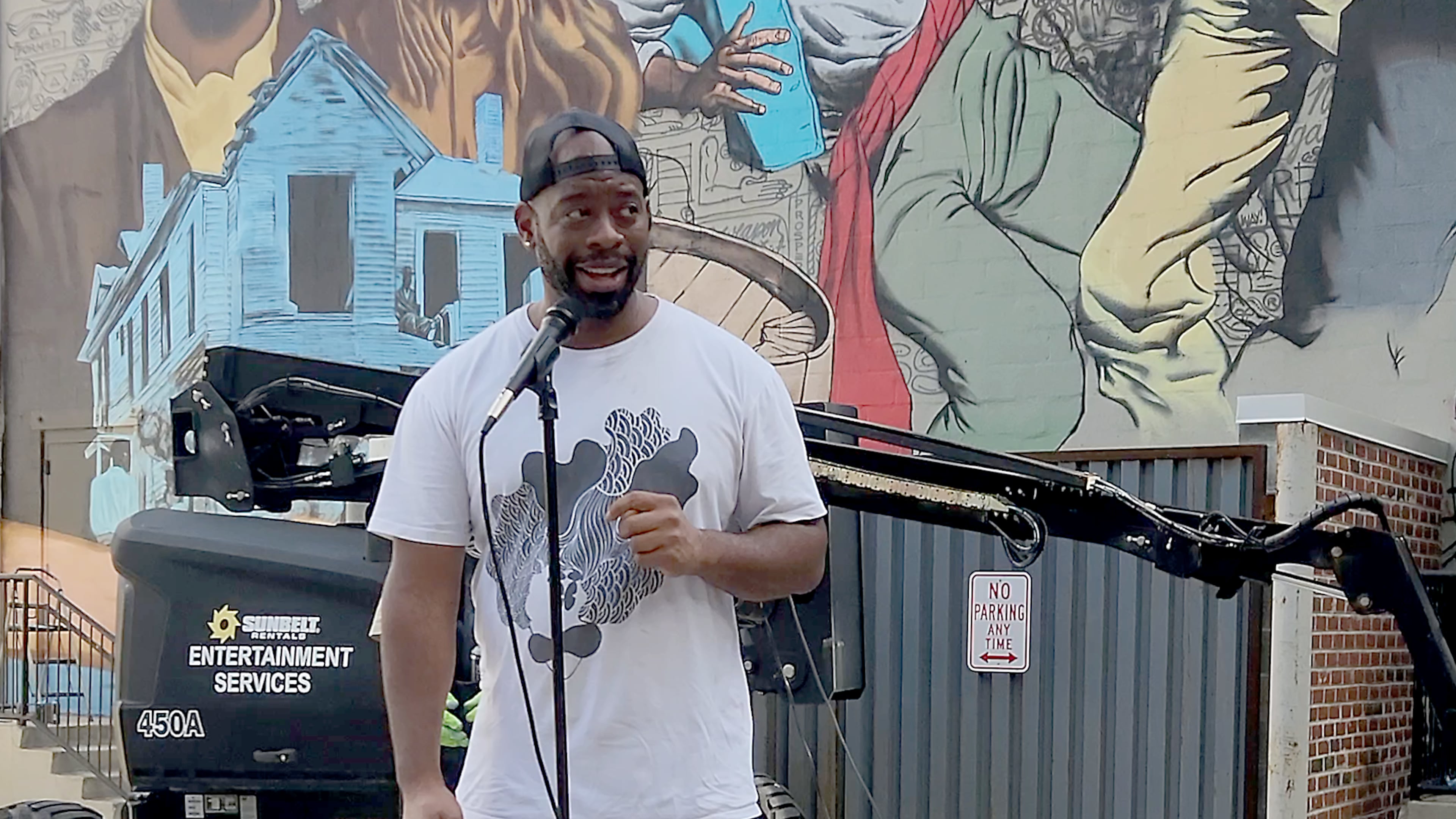
Black businesses were under attack. Black men and women en masse were assaulted, as the mayhem spread throughout Atlanta. The state militia was requested to bring in some sort of control, and the course of events made it to international news sources.
Maurice Hobson, professor of Africana Studies at Georgia State University and author of “The Legend of the Black Mecca: Politics and Class in the Makings of Modern Atlanta,” said: “The race massacre was technically genocide. It was a scripted attempt against Black people.”
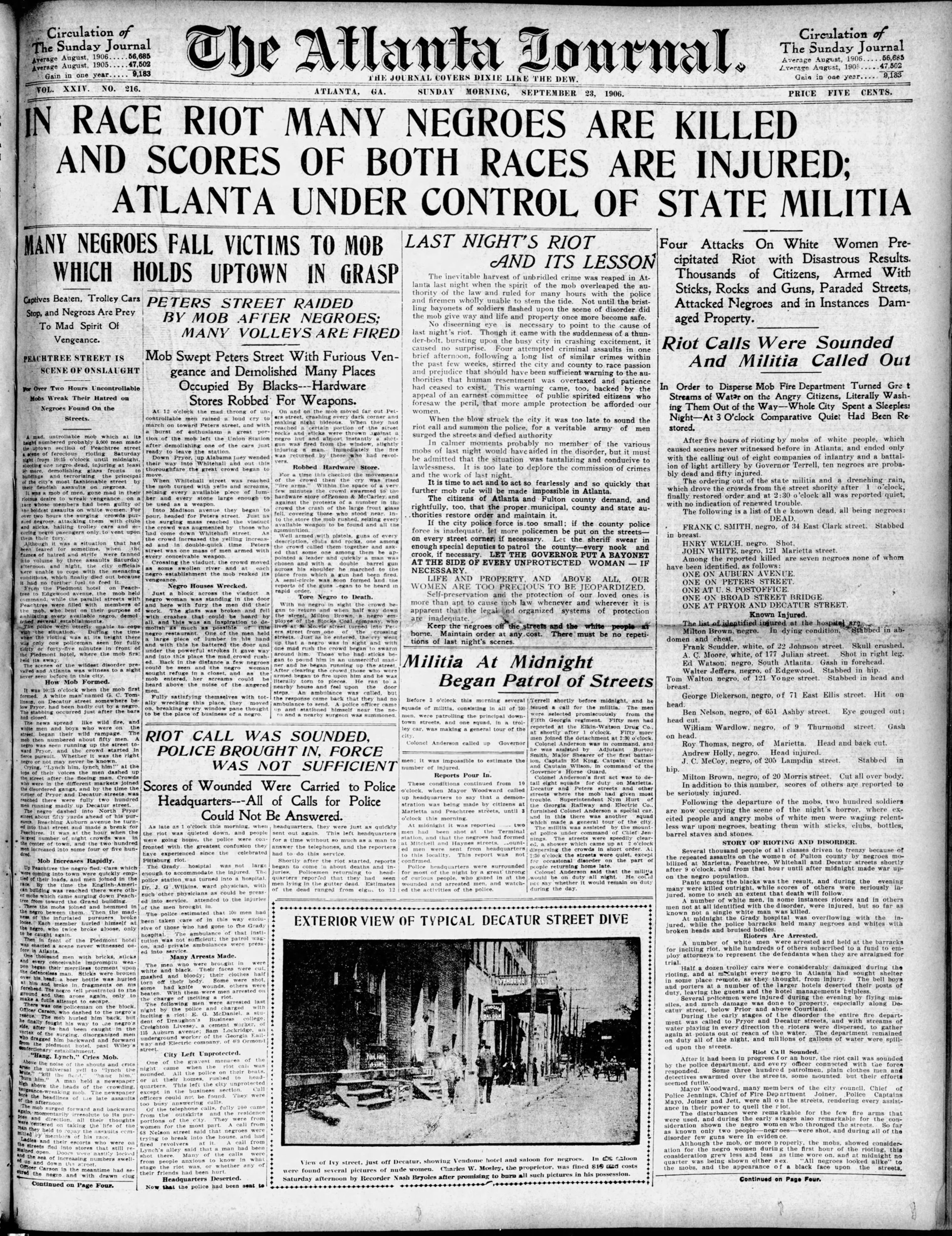
Twenty-five identified Black people were killed in the span of four days. An estimated nine unidentified victims were also caught in the bloodshed.
Hobson said the massacre perpetuated the growing racial segregation of Atlanta.
“The south side is a Black area, and the north side is a white area,” he explained. “Atlanta is still one of the most segregated cities in the United States.”
Jill Savitt, president of the National Center for Civil and Human Rights, said the Atlanta Race Massacre has become “buried history” of which people seem to be unaware, despite the vast brutality and its lasting legacy in the city.
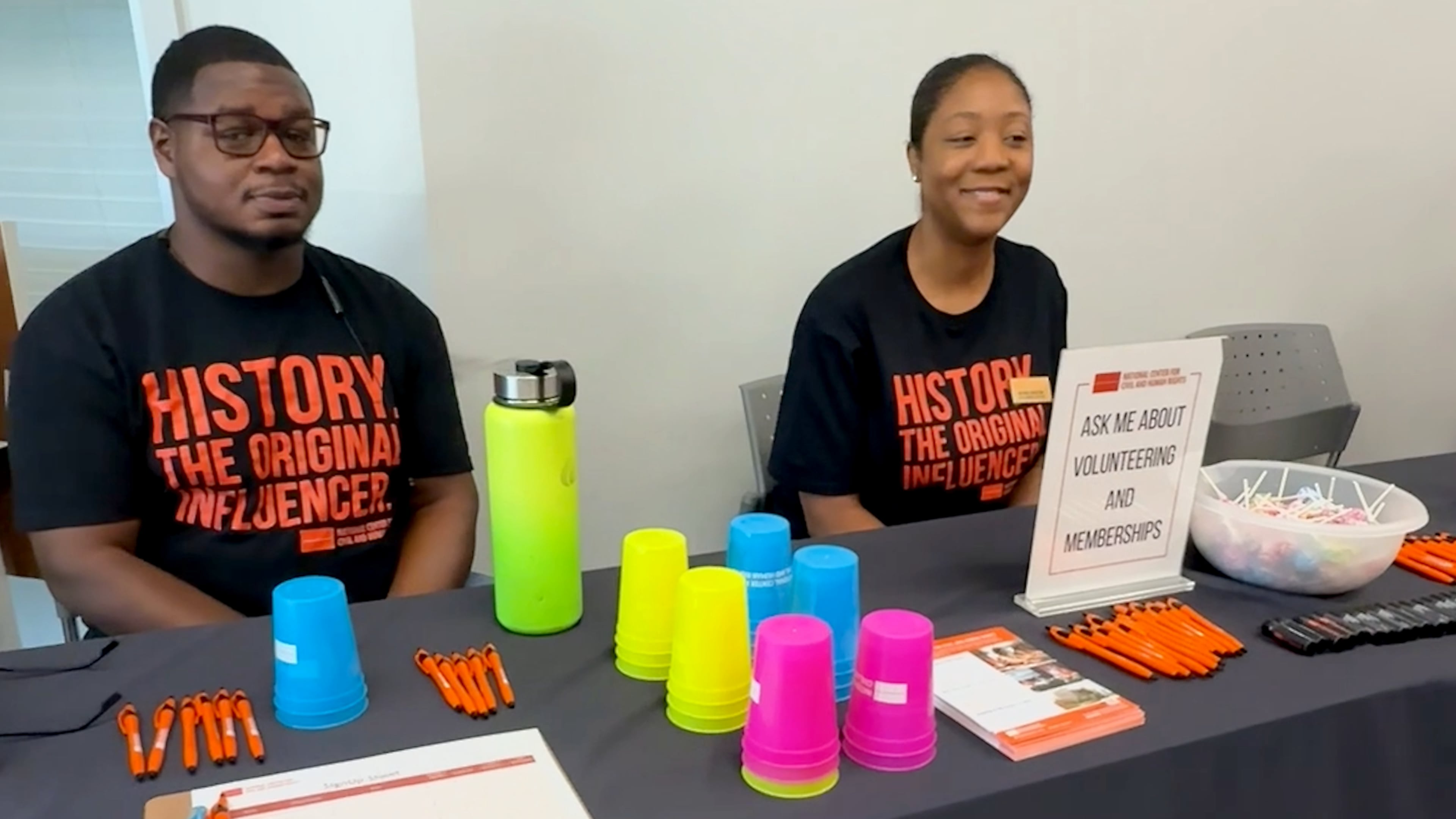
“It’s an interesting moment because the mural that we’re unveiling today is the story. It is commemorating the 1906 Atlanta Race Massacre, which was started because of media reports that were false and a racist — or racially-fueled — political campaign,” she told a crowd gathered for the mural ribbon-cutting at Focused Community Strategies on Saturday.
“We know that history doesn’t repeat itself, but it rhymes. History is never about just what happens in the past; it’s about how it lingers and how it echoes, even something that repeats itself in our lives today.”
National Center for Civil and Human Rights Chief Program Officer Kama Pierce noted the story for its local, national and international importance.
“Today, we are going to unveil a mural to teach people who live here in the community where this happened and teach visitors that come to our city our very important history,” Pierce said.
Organized by the privately funded National Center for Civil and Humans Rights, the event featured community resource booths and a step performance to honor the legacy of those affected by the massacre. The center also launched an educational mobile application for users to learn more about the 1906 Atlanta Race Massacre at their convenience.
The app, called “1906” gives a historical account and a map to show where the series of events took place.
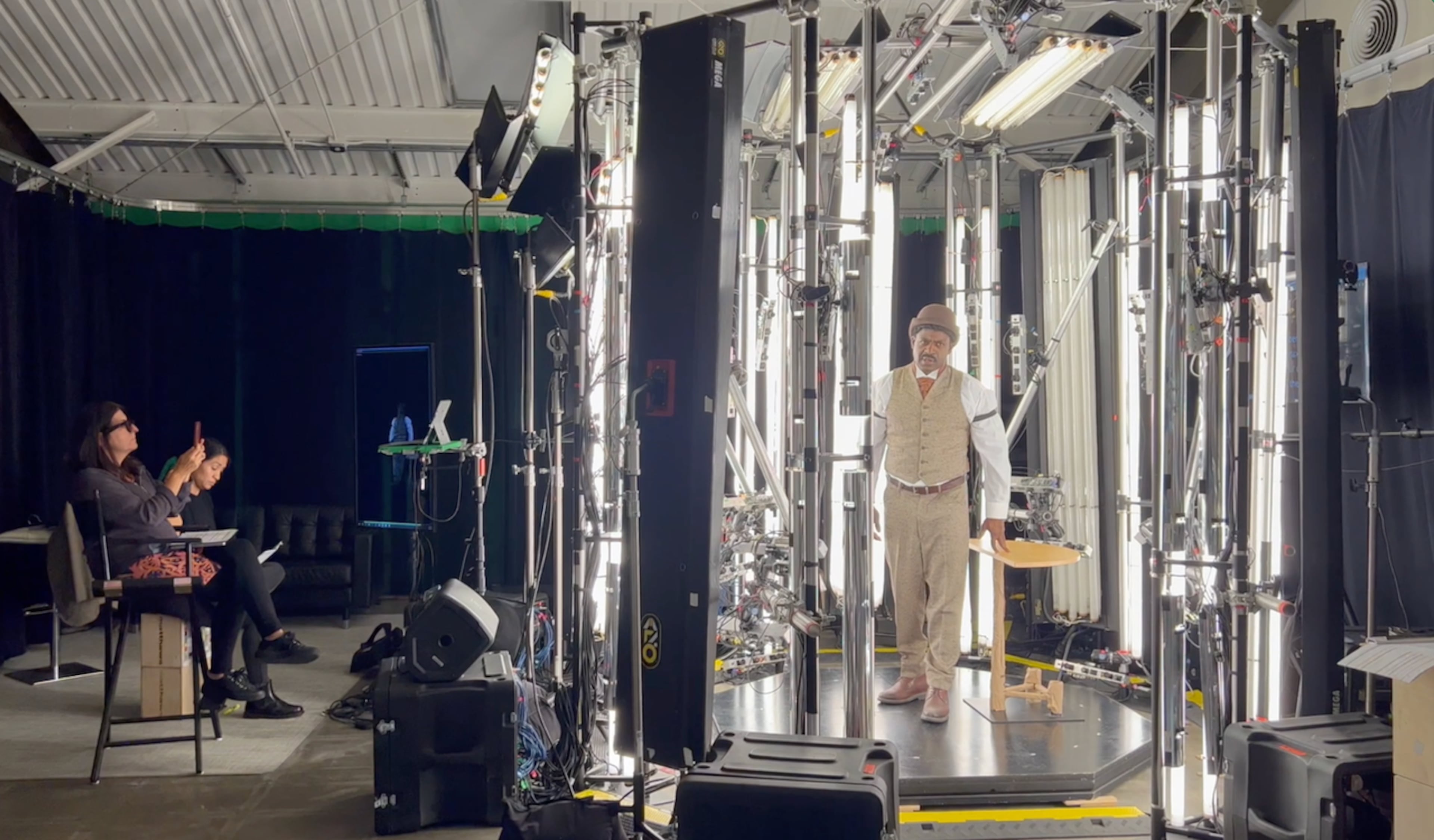
“Part of our goal is to change the public landscape so that we’re not only venerating people from the past whose stories, whose narratives were being tweaked and refreshed, but we’re telling a more complete story,” Savitt explained.
Ahead of the center’s reopening in November after renovations, she detailed an ongoing project called “Truth and Transformation” to gain more understanding of the past and how it influenced current events and culture.
“We want to move forward in a different way,” Savitt said. “So, we want to honor those who were lost, but we also want to confront the forces of racism and fear that created such violence and that continue to reverberate in their lives in sad ways.”
She added that the inclusion of the mural creates another path to accepting and learning from that history.
“This mural is part of the work we’re doing to represent history in the community, and it’s important that we pass the word,” Savitt said,
